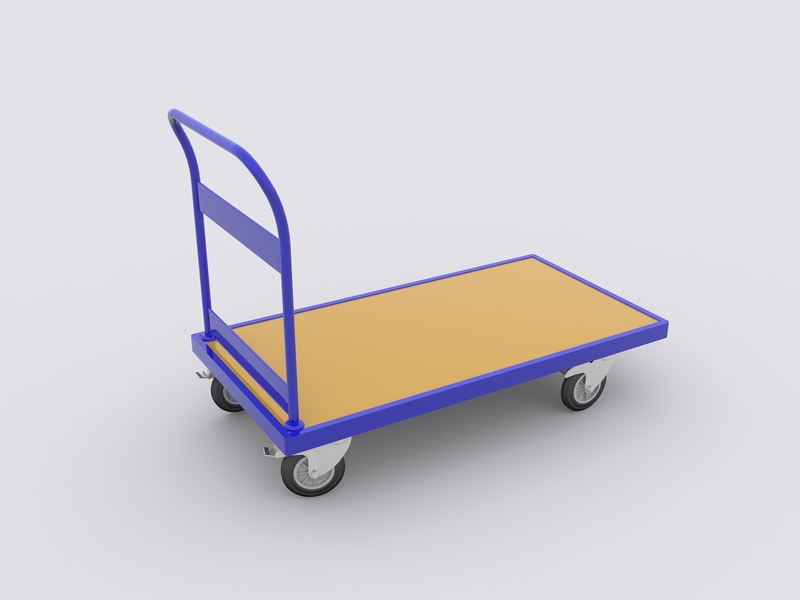Navigating the Challenges of Piano Transportation
Posted on 11/06/2025
Navigating the Challenges of Piano Transportation: A Comprehensive Guide
Piano transportation is a task that requires more than just muscle power; it demands expertise, precision, and careful planning. Whether you are moving across the street or across the country, ensuring your instrument's safety is paramount. This article delves deep into navigating the challenges of piano transportation, providing invaluable advice, practical tips, and professional insights for a seamless moving experience.
Understanding the Complexity of Piano Transportation
At first glance, a piano may seem like just another piece of furniture. However, moving a piano is especially challenging because of its:
- Size and weight - Most upright pianos weigh between 300-500 pounds, while grand pianos can exceed 1,000 pounds.
- Delicate internal mechanisms - Over 10,000 moving parts, including strings, hammers, and pedals, can be disrupted by sudden movements or shocks.
- Irregular shape - Pianos often have protruding pedals and awkward dimensions that make maneuvering difficult.
- High value - Both in terms of cost and sentimental attachment, making damage during transit particularly distressing.
Given these unique characteristics, standard moving techniques simply won't suffice when it comes to piano relocation.

The Risks Involved in DIY Piano Moving
Some people, in an effort to save money, consider moving a piano themselves. However, the risks involved in DIY piano moving far outweigh the potential savings. Here's why:
- Risk of Injury - Heavy pianos can cause severe back injuries, crushed fingers, or foot injuries if dropped. It often requires specialized lifting techniques and equipment.
- Risk of Damage to Piano - Improper handling can result in scratched surfaces, broken legs, or crucial internal damage, greatly lowering the instrument's value and sound quality.
- Property Damage - Pianos can easily gouge floors, scrape walls, or shatter stair railings during a move.
Because of these risks, it is always advisable to seek help from professional piano movers whose expertise can prevent disaster.
Preparing for a Successful Piano Move
1. Assessing the Piano and Its Path
Before transportation begins, conduct a thorough assessment:
- Measure Your Piano - Know the exact height, width, and depth of your instrument.
- Inspect Pathways - Measure doorways, hallways, stairs, and elevators. Remove obstacles such as rugs and decor items to provide a clear path.
- Plan the Route - Identify turning points or narrow spaces where maneuvering may be tricky.
2. Gathering the Right Equipment
Specialized equipment is essential for safe piano transportation. The following items are commonly used:
- Piano Dolly - Specifically designed to bear the weight and dimensions of pianos.
- Moving Straps - Allow movers to carry and stabilize the piano securely.
- Padded Blankets - Prevent scratches and protect polished surfaces.
- Ramps - Useful for navigating stairs or loading onto moving trucks.
- Tool Kit - In some cases, it may be necessary to remove legs or pedals for safe transport.
The Role of Professional Piano Movers
Hiring professional piano moving services can mean the difference between a successful move and a costly catastrophe.
Why Choose a Specialist?
- Experience in Handling - Professional movers are trained to handle different types of pianos, from uprights to concert grands, with precision.
- Use of Latest Equipment - Companies invest in the best moving gear to ensure maximum safety.
- Insurance and Liability Coverage - Reputable movers provide insurance for your piano, offering protection against potential damage.
- Time and Stress Savings - Professionals take care of all the logistics, letting you focus on other aspects of your move.
When researching services, look for licensed and insured piano movers with strong customer reviews and a proven track record.
The Process: Step-by-Step Piano Transportation
1. Pre-Move Inspection
Movers will typically start by assessing the piano's condition, documenting scratches or other pre-existing issues, ensuring that any claims after the move are legitimate.
2. Securing the Piano
All loose components such as music stands, lids, and pedals are either removed or secured. The piano is then wrapped in thick blankets and fastened with moving straps for protection.
3. Lifting Techniques
Specialized dollies and ramps are used to carefully lift and roll the piano rather than dragging it -- reducing strain on the instrument and floors. At least three to four people typically handle the move for safety.
4. Loading and Transportation
Once outside, the piano is gently loaded onto the moving truck using a ramp or hydraulic lift. Inside the truck, it is strapped securely to prevent movement during transit.
5. Unloading and Set-Up
On arrival, the process is reversed, with careful placement in the new location. Professional movers may also assist in minor reassembly if parts were removed.
Best Practices for Moving Different Types of Pianos
Upright Pianos
- Always keep the instrument upright to avoid internal damage.
- Secure the top lid and pedals tightly.
- Use a four-wheel dolly for easier movement over flat surfaces.
Grand and Baby Grand Pianos
- Remove and individually pack legs and pedals to prevent snapping.
- Cushion the keyboard lid and body with extra padding.
- Utilize a skid board, a flat platform to safely support the piano during move.
- Always maintain communication among movers to coordinate each movement phase.
Long-Distance Piano Transport: Added Challenges
Moving a piano across states or countries poses additional challenges:
- Climate Changes - Pianos are sensitive to humidity and temperature extremes; ensure the moving truck is climate controlled if possible.
- Vibration and Shock - Prolonged travel increases the risk of internal displacement; secure the piano tightly and check frequently during stops.
- Handling Changes - Multiple transfers between vehicles or handlers can introduce mistakes; choose a company offering direct, uninterrupted transit.
The Importance of Tuning After Transportation
Even with the best care, moving a piano can disrupt its internal balance. That's why professional tuning after relocation is essential:
- Humidity, temperature, and vibrations affect pitch and action regulation.
- Schedule a piano technician to inspect and tune your instrument within a week of move-in.
- This step ensures optimal sound quality and protects your investment for years to come.
Factors Affecting the Cost of Piano Moves
The expense of professional piano transportation services depends on several factors:
- Type and Size of Piano - Larger instruments cost more to move due to complexity.
- Distance - Local moves are typically less expensive than cross-country or international moves.
- Access Difficulties - Stairs, narrow halls, or lack of elevators increase cost.
- Special Handling - Antique, ornate, or high-value pianos may require custom crating or care.
- Additional Services - Tuning, storage, or climate control can add to the final bill.
Request multiple quotes in advance, and always verify what is included in your moving package.
Protecting Your Piano During Storage
In some cases, there may be a need for temporary storage of your instrument. To ensure maximum protection:
- Choose climate-controlled storage to avoid warping or cracking caused by humidity swings.
- Keep the piano covered with cotton blankets to guard against dust and accidental scratches.
- Do not stack anything on top of the instrument, as this can damage the finish and soundboard.
*Well-planned storage is as crucial as transportation to keep your piano in top condition.*

Frequently Asked Questions about Piano Transportation
Can I Move a Piano Without Professional Help?
While not impossible, moving a piano without proper skills and equipment is highly risky. For your safety and the instrument's integrity, always consider professional assistance.
How Long Does It Take to Transport a Piano?
Local moves typically require a few hours, while long-distance or international transportation can take days or weeks, depending on logistical arrangements.
What if My Piano Has to Be Moved Upwards or Downwards Staircases?
Piano movers use straps, dollies, and sometimes additional manpower or rigging systems to safely navigate stairs. This process adds to the cost but ensures safety.
Is Piano Insurance Necessary?
Yes. Standard moving insurance often doesn't cover valuable items like pianos in full. Check for dedicated piano transportation insurance when hiring movers.
Conclusion: Mastering the Art of Piano Transportation
Navigating the challenges of piano transportation is much more than a physical task--it is a specialized endeavor that combines planning, knowledge, and professionalism. By understanding the intricacies involved, preparing adequately, and trusting qualified movers, you can ensure your treasured instrument arrives safe and sound at its new home.
Whether you own an upright, a baby grand, or a concert grand, proper handling during transportation safeguards your piano's value, function, and your peace of mind. Appreciate the journey as much as the destination, and let your piano fill your new space with music, not moving-day regrets.
```








